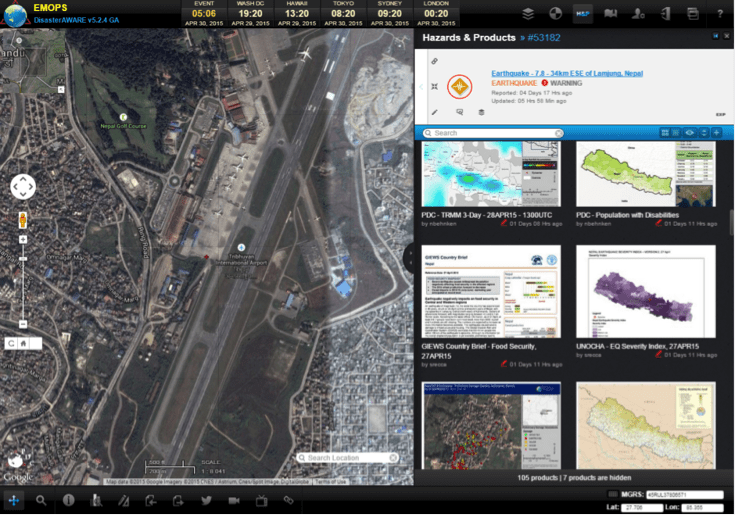In the days following the 7.8M earthquake in Nepal, reaching some of the hardest hit locations has been problematic for emergency response and relief organizations, leaving many cut off from assistance. Search and rescue operations, as well as food distribution, have also been impacted by the limited accessibility. Disruption in transporting water to affected areas has also increased the risk of water-borne illnesses, as access to safe water for drinking, hygiene, and sanitation purposes becomes more limited.
Access to remote mountain villages in Nepal was difficult prior to the quake, but now with the probability of extensive infrastructure damage and unknown road conditions, reaching these locations has become extremely challenging. Media reports indicate that heavy rain and landslides have also added to transportation concerns.
According to reports, roads in the Kathmandu Valley are accessible, but transporting relief supplies from Kathmandu’s Tribhuvan International Airport (site of the designated Humanitarian Staging Area) to some of the affected areas near the quake’s epicenter may only be accomplished by air. Another complicating factor is that incoming humanitarian aid has led to congestion at Kathmandu’s airport, and is expected to cause delays in processing cargo. Limited aircraft space is also posing logistical problems as air traffic increases.
Nonetheless, the United Nations Humanitarian Air Service (UNHAS) has been deployed to fill transportation gaps, but severe weather is grounding helicopters and the destabilized conditions on mountain slopes make landing dangerous. As conditions permit, the presence of UNHAS will be important in enabling humanitarian organizations to better access remote locations to provide needed supplies and assistance. Relief organizations are also attempting to reach mountain villages on foot.
Learn more:
• Find PDC products about the 7.8M earthquake,
• Read about a 2014 Disaster Response Exercise in Nepal, or
• Visit ReliefWeb for additional sources and links.
Additional PDC news regarding the 7.8M earthquake in Nepal:
• Preparedness Efforts Help Support Response in Nepal
• Initial Damage and Needs Assessment in Nepal
• Food Security Concerns in Nepal Grow as Demands Exeed In-Country Supply
• Health Care Resources Stretched Beyond Capacity by Earthquake Injuries
• Data Access for Supporting Response and Recovery in Nepal
• Critical Data on Infrastructure in Nepal as Death Toll Rises
• 7.8M Earthquake Strikes Nepal, Followed by Aftershocks

